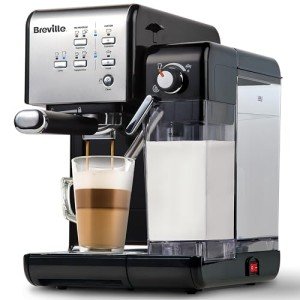20 Reasons Why Stainless Steel Espresso Machines Cannot Be Forgotten

The Art of Italian Espresso Machines: A Brewed Tradition
Italian espresso machines are not just devices; they are an integral part of Italy's rich coffee culture, representing a mix of artistry, engineering, and design. Coffee aficionados around the globe acknowledge the value of high-quality espresso, a staple of Italian life and cuisine. This article explores the history, mechanics, types, and aspects to consider when purchasing an Italian espresso machine, reflecting the depth of this precious beverage and its brewing methods.
History of Espresso Machines
The espresso machine's development dates back to the early 20th century in Italy, where coffee was not simply a drink but a vital social ritual. The preliminary attempts to brew espresso started with basic, stove-top designs, slowly developing into intricate machines that could reproduce the ideal brew.
- 1901-- The First Espresso Machine: The very first steam-powered espresso machine, referred to as the "Ideale," was established by Luigi Bezzera. This machinery marked a turning point in espresso brewing.
- 1938-- The Lever Machine: The introduction of the lever machine made it easier to manage the pressure utilized in espresso extraction, boosting flavor consistency.
- 1947-- The Automatic Machine: Reaching more customers, Gaggia introduced the very first automatic espresso machine, more popularizing espresso bars.
- 2007-- The Digital Age: Technological advancements caused the birth of fully programmable machines, enabling users to customize their developing settings to accomplish a tailored coffee experience.
Secret Features of Italian Espresso Machines
Italian espresso machines embody accuracy, workmanship, and innovation. Here are some crucial components that highlight their significance:
| Feature | Description |
|---|---|
| Boiler Type | Identifies how heat is generated and preserved. Common types consist of single boiler, dual boiler, and heat exchanger. |
| Group Heads | Where the coffee is brewed; commercial machines often have several group heads for performance. |
| Pressure Control | Essential for attaining the perfect espresso; most machines run at 9 bars of pressure. |
| Frothing Capabilities | The steam wand permits for milk frothing, necessary for drinks like cappuccino and latte. |
| Develop Quality | The materials used (stainless steel, brass, and so on) impact resilience and heat retention. |
Kinds Of Italian Espresso Machines
Choosing the ideal machine hinges on user preferences, budget, and planned use. Below are the main kinds of Italian espresso machines:
Manual Espresso Machines
- Pros: Offer complete control over the developing process, permitting a personalized touch.
- Cons: Require skill and practice, can be labor-intensive.
Semi-Automatic Machines
- Pros: Provide a balance between automated and manual processes; users control water circulation.
- Cons: Can have a steeper learning curve than completely automatic machines.
Completely Automatic Machines
- Pros: Simplify the brewing procedure with push-button operations; perfect for beginners.
- Cons: May compromise a few of the nuances of manual brewing.
Super-Automatic Machines
- Pros: Grind, tamp, brew, and froth immediately; convenient for hectic way of lives.
- Cons: Less control over the developing variables, capacity for a less genuine espresso experience.
Purchasing Guide: Factors to Consider
Picking the perfect Italian espresso machine can be difficult, but considering the following elements can streamline the decision-making procedure:
- Budget: Italian espresso machines vary from affordable to high-end models, so set a budget upfront.
- Use Frequency: Evaluate how typically you will use the machine; daily users may want a more durable option.
- Space: Measure your cooking area or counter area; some machines can be large and need sufficient clearance.
- Maintenance: Consider ease of cleaning; machines with detachable parts or built-in cleansing features may decrease upkeep.
- User Skill Level: Beginners may prefer totally or semi-automatic machines, while skilled baristas can deal with manual machines.
- Brand Reputation: Research brands known for quality, such as Breville, Gaggia, and La Marzocco.
Popular Italian Espresso Machine Brands
Italian workmanship is renowned for producing a few of the best espresso machines worldwide. Here are top brands worth considering:
- Gaggia: Known for its home espresso machines and affordability.
- La Marzocco: An exceptional brand name known for its commercial-grade machines and innovative technology.
- Rancilio: Renowned for its durable build and professional-quality machines appropriate for home and commercial use.
- Sage/Breville: Offers advanced functions and user-friendly styles, perfect for both amateurs and enthusiasts.
FAQs
What is the distinction between espresso and regular coffee?
Espresso is a focused coffee brewed by requiring hot water through finely-ground coffee under pressure. It has a thicker consistency, richer taste, and greater caffeine concentration than routine coffee.
Can I make milk-based beverages with an espresso machine?
Yes, many Italian espresso machines include a steam wand to froth milk for beverages like cappuccinos, lattes, and macchiatos.
How typically should I clean my espresso machine?
Routine maintenance is necessary. Generally, a comprehensive cleaning is suggested every couple of weeks, while descaling should be done every 1 to 3 months, depending upon water firmness.
What is the ideal pressure for developing espresso?
The ideal pressure for brewing espresso is around 9 bars. This pressure makes sure the optimum extraction of tastes from the coffee premises.
Are more costly machines worth the investment?
Higher-end machines typically use much better materials and innovation, offering improved toughness and more consistent results. For serious coffee enthusiasts, investing in an excellent machine can elevate the espresso experience substantially.
Italian espresso machines are far more than mere brewing devices; they are an event of a cultural custom that has actually influenced coffee consumption worldwide. With Automatic Espresso Machines offered to fit any user's needs-- ranging from amateurs to seasoned baristas-- there is an Italian espresso machine perfectly fit for everyone. As you embark on your espresso journey, understanding the history, mechanics, and choices will enhance your experience and appreciation for this time-honored drink. Whether you look for to recreate a coffee shop ambiance at home or improve your brewing strategy, these machines are capable of providing extraordinary cups of espresso decorated with the abundant history of Italian coffee culture.

